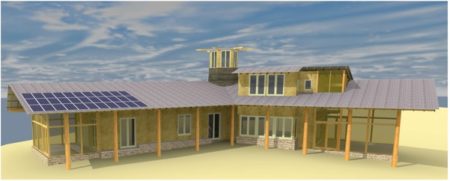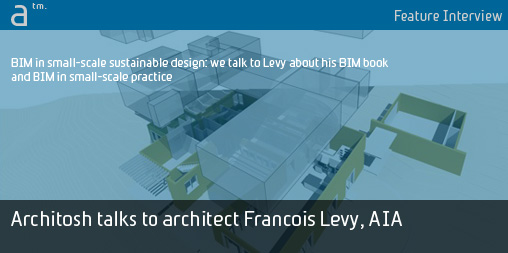Continued from page 4
Cultural Challenges in smallBIM Adoption
AFR: Culturally, in terms of workflow, what are some of the challenges there that you see with adopting BIM? For the small practice?
FL: Training. Training is the number one issue in terms of adoption. The cost is one issue. And you know different vendors vary. If you are transferring from an eight year old CAD program to a new BIM you are going to also figure out quickly you need new hardware to run the program so there is always hidden costs beyond the licenses too. So cost of training is the top issue preventing more adoption of BIM.
Of course the other issue is the reality that suddenly you need to retrain yourself and your team on an entirely new process. BIM is not just a new CAD program but a new workflow methodology. So that is the push back we keep seeing on the BIM discussion boards, people feel the anticipated pain in this and wonder.
AFR: What are some things that can make BIM adoption easier for the small practice?
FL: Well, if you throw the entire office at this at once then that means a hundred percent of your personnel is tied up in training and learning a new workflow. That’s tough. If you are a sole practitioner, the same is true. However, if you have one or just two people go off and figure this out and then disseminate this back into the office slowly, then the adoption can go more smoothly with less interruption to the whole firm.

07 - A ranch house that is off-grid was designed by the author using BIM. Optimization of energy consumption involved PV collector arrays and critical shading by over-hangs, among other things. (image courtesy of: Francois Levy, AIA)
AFR: Yes, you’re right. And of course we are facing a tough economy right now. And there it goes again, that irony between economy and technology. When things are bad you have the time for new learning but not the money; when you’re flat out busy you have the money but not the time. It’s a tough catch 22. Firms need to remain committed to process change and refinement consistently.
FL: Absolutely.
AFR: Thanks for speaking to me about your BIM book.
FL: You’re welcome. Thanks for the opportunity.
Closing Thoughts
One of the interesting things Francois Levy said after our interview segment was that he was surprised just how difficult it was to find good case studies for this book. He admitted that he over-estimated the level of adoption in BIM in the small-scale practice. But that is part of his challenge with publishing this book: reversing the common perception that BIM is for large-scale, big building practice only.
Another interesting fact about this book is that Levy suggest that BIM is a “design environment” and not just a “design tool” as is also common. This is also different than BIM being a design process change because it is actually more aimed at another suggestion Levy makes in this book: that architects establish an interest in what he terms “climate indexed” design. That is, a building’s massing, geometry, fenestration, envelop and materials and passive strategies are specifically tailored to the building’s region and site.
Any architect doing small or medium scaled projects who is also vested in sustainable design but is not yet doing BIM will enjoy this book’s overall focus. For those who are doing BIM now but not yet highly focused on sustainable design, this book will provide even more delight in reviewing the way BIM models can be utilized for sustainable design.
Architect Francois Levy, AIA’s, book can be found at various websites for purchase. Including Wiley, Amazon and others. We hope you enjoyed this extensive interview feature and would love to hear from you. If you have read the book, tell us what you think or share your thoughts on our Facebook wall.




Reader Comments
Comments for this story are closed